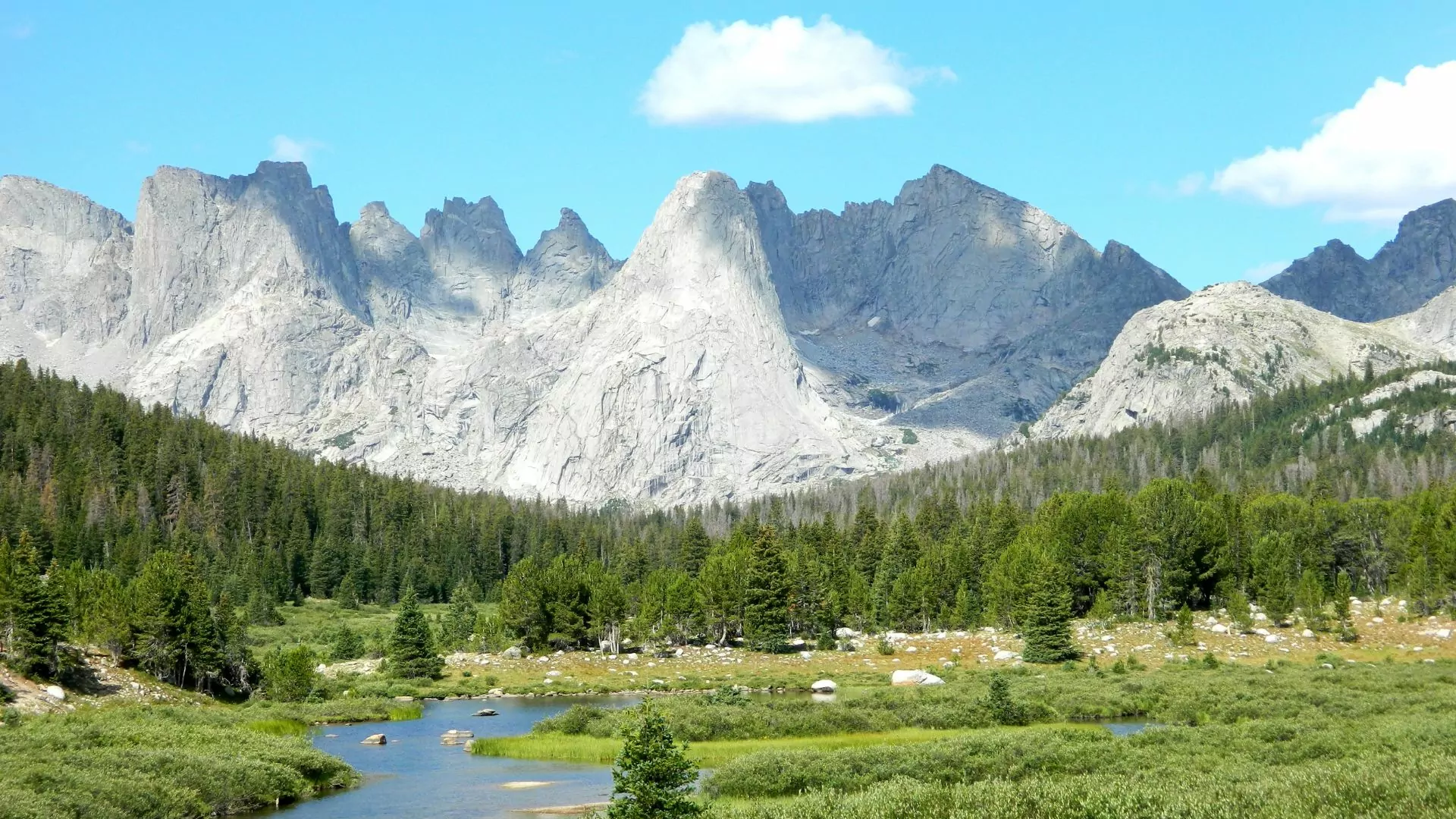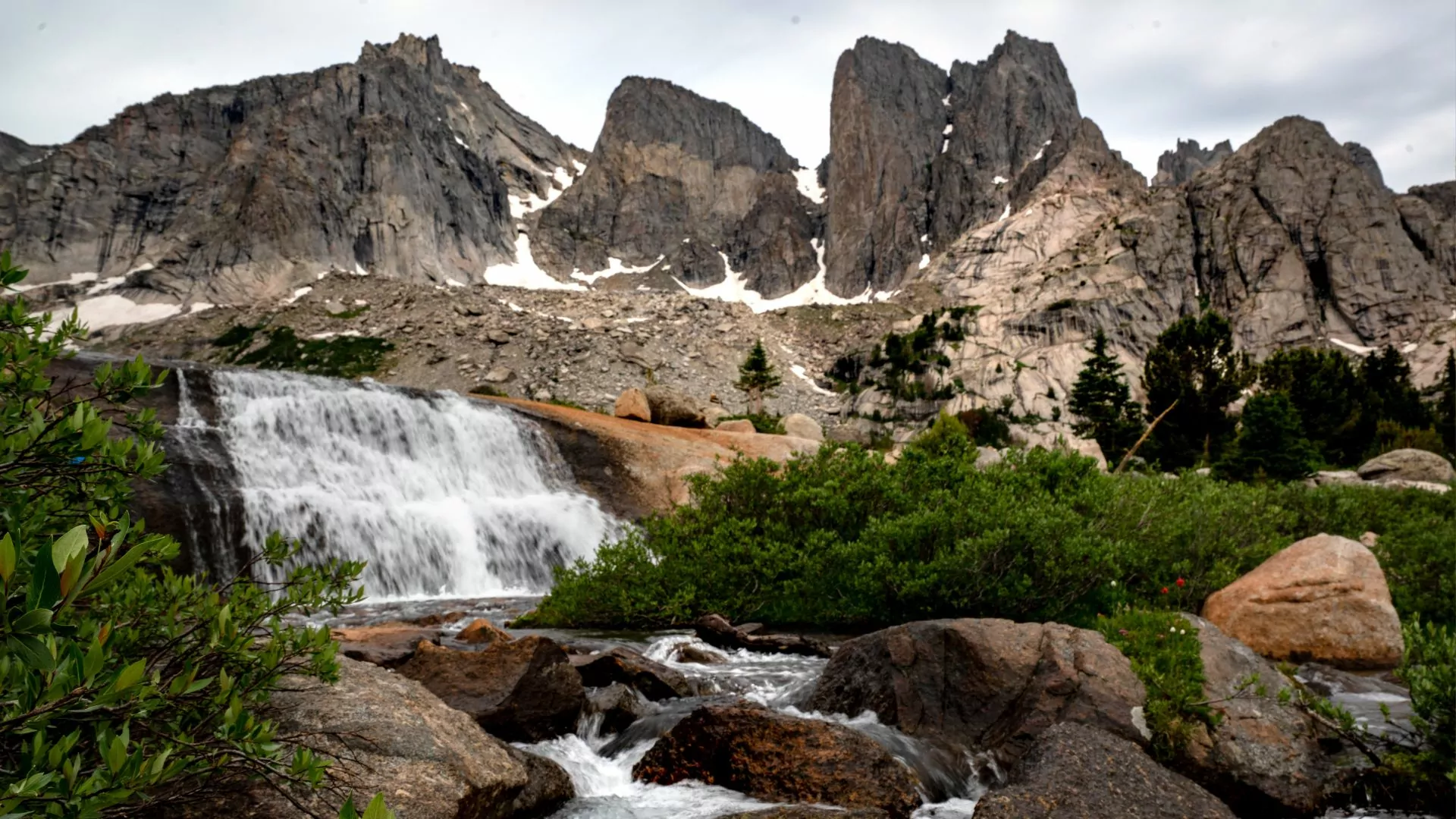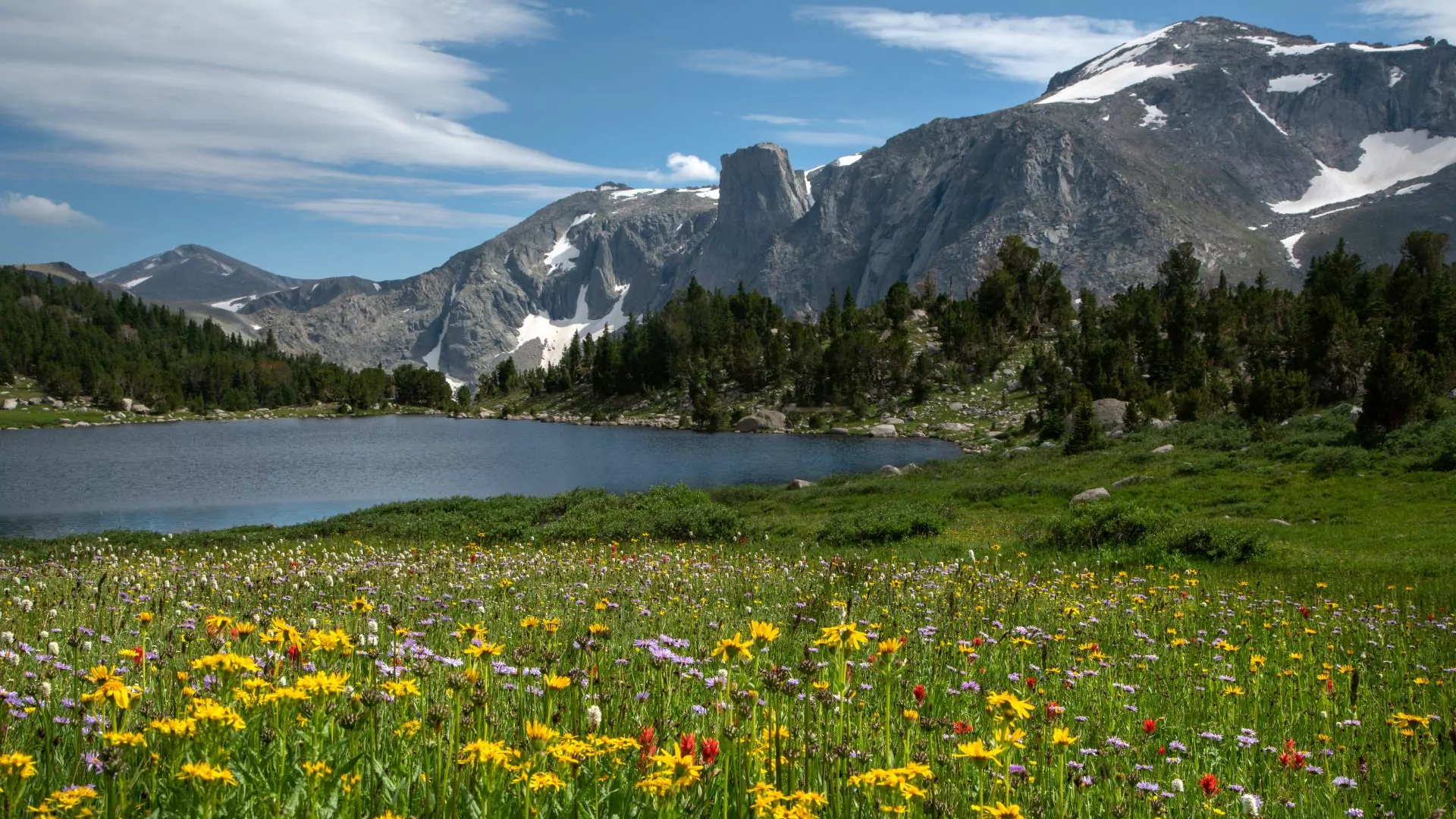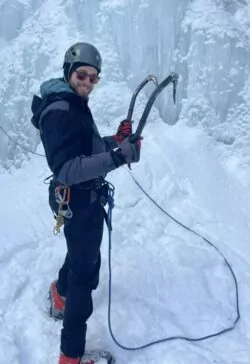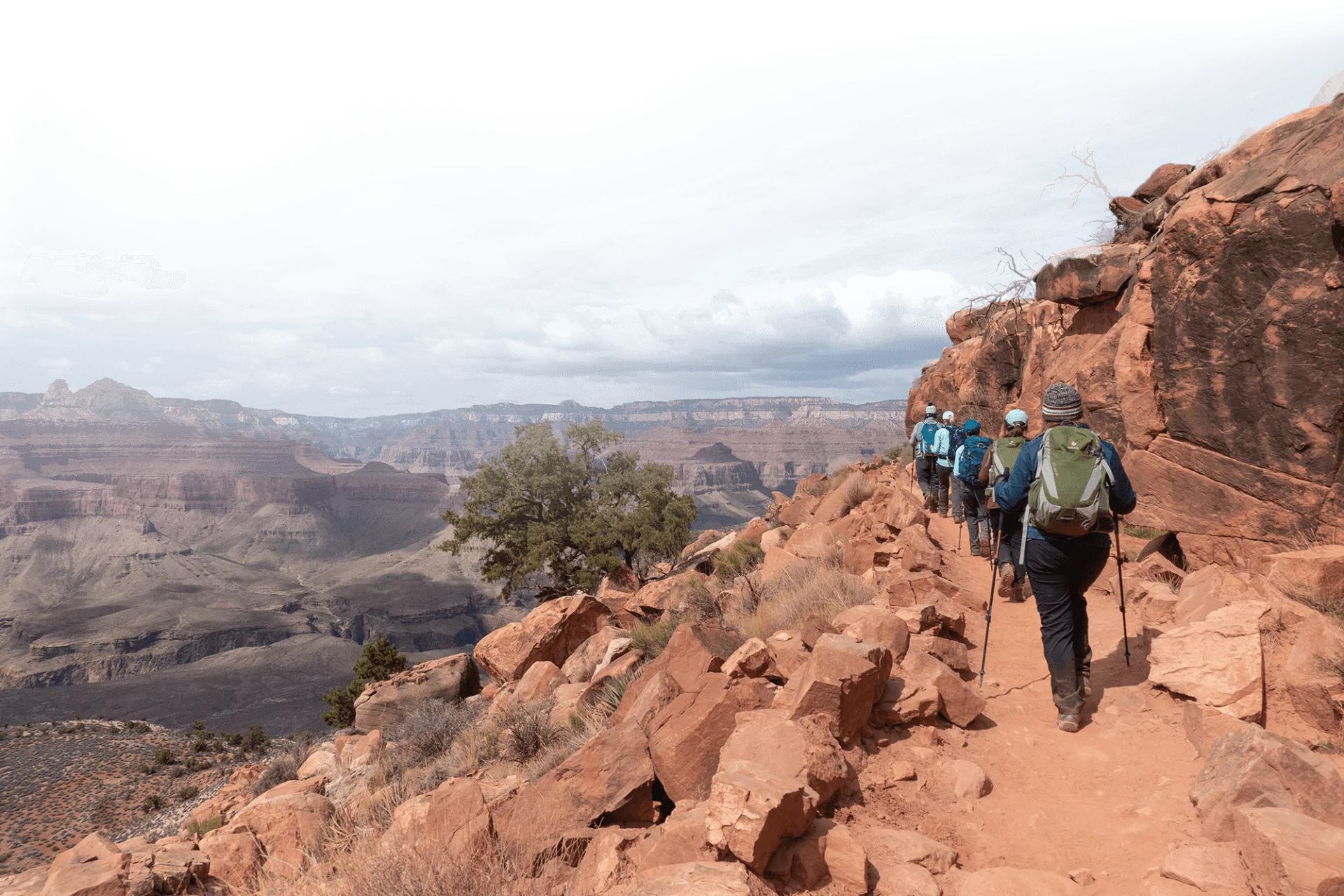The Wind River Range and the Cirque of the Towers
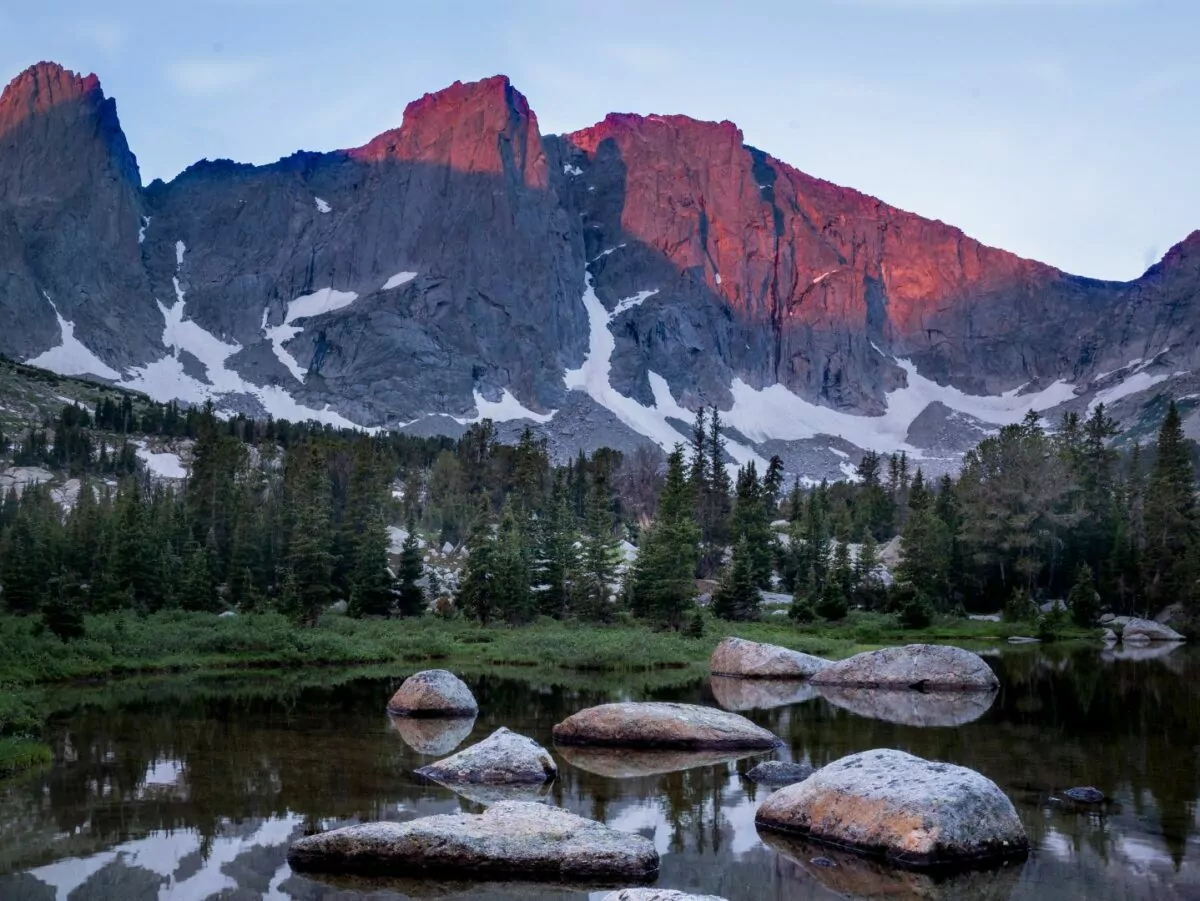
There are places in the world that call to the adventurous spirit, landscapes so wild and awe-inspiring that they linger in your mind long after you’ve left. The Cirque of the Towers in Wyoming’s Wind River Range is one such place. A granite fortress of jagged peaks encircling alpine lakes and meadows, this remote backcountry wonder is a paradise for hikers, backpackers, climbers, and those seeking solitude in the high country. Whether you arrive on foot or with the help of trusty pack llamas, a journey into Cirque of the Towers is one you’ll never forget.
Formation of the Wind River Range
The Wind River Range is a product of over one billion years of geological activity. The core of the range consists of Precambrian granite and gneiss, some of the oldest exposed rock in North America. Over millions of years, tectonic activity uplifted these formations, creating the dramatic peaks we see today. During the Ice Age, massive glaciers sculpted the landscape, carving out deep valleys and cirques, including the Cirque of the Towers. The result is a collection of sheer granite walls, jagged summits, and pristine alpine lakes, making the region a geological masterpiece as well as a world-class outdoor destination.
Where Is The Cirque of the Towers?
Tucked deep within the Wind River Range, the Cirque of the Towers is located in the Bridger-Teton National Forest and the Wind River Indian Reservation in western Wyoming. The most popular access point is the Big Sandy Trailhead, about 55 miles south of Pinedale. Reaching the trailhead requires navigating a long, bumpy dirt road, but the reward at the end is worth every mile. The moment you step onto the trail, you are immersed in a wilderness of towering granite spires, alpine lakes, and wildflower-strewn meadows.
When to Visit The Cirque of the Towers
The best time to explore the Cirque of the Towers is from July through September. Snow lingers well into early summer, and unpredictable storms can roll through any time of year. Mid-summer provides the best mix of accessibility and beauty, with wildflowers in bloom and the high passes mostly snow-free. Fall brings golden meadows and fewer crowds, but dropping temperatures can make for chilly nights. If you’re using pack llamas for your journey, these months also offer the best grazing opportunities and easier travel conditions over high-altitude passes.
Lakes, Cirques & Towers Llama Trek
Hiking and Climbing in the Cirque
The classic route into the Cirque of the Towers is via Big Sandy Trailhead to Jackass Pass, an approximately 9-mile trek with 2,000 feet of elevation gain. The trail meanders through forests and past serene lakes before climbing up the rocky switchbacks of Jackass Pass, where the first breathtaking views of the cirque unfold. Hikers should prepare for rough terrain, especially when descending into the cirque itself.
For those looking for a more adventurous loop, the Texas Pass Route offers an alternative way in, connecting with the main trail to form a stunning 17- to 20-mile loop. This option requires a steep climb over Texas Pass but rewards hikers with even more panoramic views and a less-traveled route into the cirque. For those using llamas, be aware that Texas Pass can be challenging due to its loose rock and steep incline, making Jackass Pass the preferred option for pack animal travel.
In addition to being a hiker’s paradise, the Cirque of the Towers is also a world-class climbing destination. Climbers from around the globe travel here to scale its sheer granite faces, with classic routes like the East Face of Pingora Peak and the East Ridge of Wolf’s Head drawing technical climbers seeking both challenge and beauty. The solid rock and breathtaking exposure make this an unforgettable climbing experience, though conditions can change quickly with afternoon storms rolling in.
The Continental Divide Trail (CDT)
The Continental Divide Trail (CDT), a 3,100-mile-long route stretching from Mexico to Canada, passes through the Wind River Range, offering some of the most stunning and remote sections of the entire trail. Many CDT thru-hikers opt for an alternate route that takes them through Cirque of the Towers, as it offers a more scenic and dramatic experience compared to the standard high-route through the Winds. This alternate adds extra mileage and some technical terrain but rewards hikers with breathtaking views of the cirque’s iconic granite spires.
CDT hikers traveling through the Winds need to be well-prepared for unpredictable weather, river crossings, and rugged terrain. The remoteness of this section means resupply points are limited, with Pinedale and Lander serving as the primary trail towns for hikers needing food and gear. For those who incorporate the Cirque of the Towers into their CDT trek, the experience is often one of the most memorable and awe-inspiring highlights of the entire journey.
Backpack to the Continental Divide
Camping in The Cirque of the Towers
Camping in the Cirque of the Towers is an experience like no other. Designated campsites are not available, but there are plenty of flat, durable surfaces near Lonesome Lake and along the surrounding meadows. To minimize impact, follow Leave No Trace principles: camp at least 200 feet from lakes and streams, and avoid trampling fragile alpine vegetation. Due to its popularity, the area sees heavy foot traffic, so responsible camping is critical to preserving this pristine wilderness for future adventurers.
Llama-supported trips provide an excellent way to access the cirque with more comfort, as they can carry gear, allowing hikers to travel light and enjoy the scenery without the strain of a heavy pack. Our guided llama treks into the Cirque of the Towers ensure a more enjoyable and sustainable backcountry experience while reducing the impact on the fragile ecosystem.
Permits and Bear Precautions
While no permits are required for backpacking in the Cirque of the Towers, those venturing into the Wind River Indian Reservation will need to obtain a tribal permit. Climbers should also research any specific regulations regarding fixed anchors and bolting restrictions within the national forest.
Additionally, proper food storage is required, such as a canister, ursack, or a properly hung food bag. The Wind River Range is home to both black bears and grizzlies, making proper food storage and bear awareness essential. Hanging food is not always a reliable option due to the lack of suitable trees in the alpine zone, so prior planning is essential. Traveling in groups, carrying bear spray, and making noise while hiking are all recommended precautions. Always store food and scented items well away from your campsite to reduce the risk of bear encounters.
Why You Should Visit The Cirque of the Towers
Few places capture the essence of true wilderness like the Cirque of the Towers. It’s a place where the sky feels bigger, the air crisper, and the silence deeper. Whether you’re hiking in for a weekend escape, embarking on a longer, llama-assisted trek, or tackling a technical climbing route, the cirque’s towering spires and pristine landscapes will leave you in awe.
At the end of the day, as the sun dips behind the granite peaks and the stars begin to scatter across the sky, you’ll understand why so many return to the Cirque of the Towers year after year. It’s not just a destination; it’s an experience—one that calls to those who seek adventure, beauty, and the raw, untamed spirit of the mountains.
So pack your gear (or let the llamas do the heavy lifting), plan your route, and set out for an extraordinary journey into the Cirque of the Towers.



